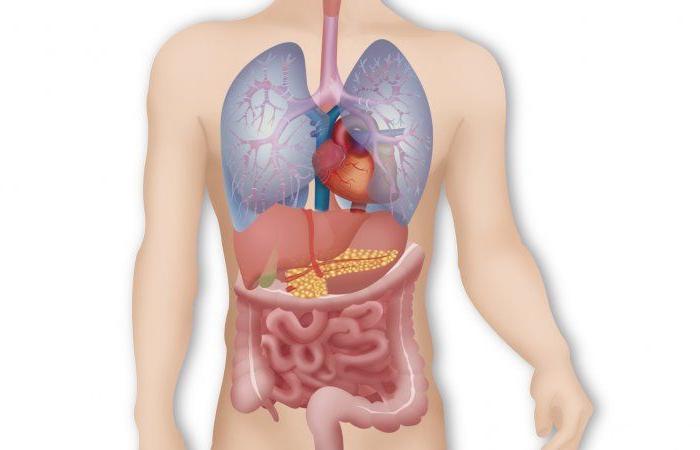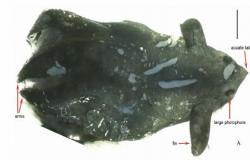The first pandemic wave of severe acute respiratory syndrome betacoronavirus-2 (SARS-CoV-2) infection caught Western healthcare systems unprepared, causing a high number of seriously ill patients with significant mortality worldwide, exceeding 7 million deaths, together with enormous social and economic hardship.
A study, coordinated by the University of Padua, and conducted by an interdisciplinary team of researchers from the Universities of Yale (USA) and Birmingham (UK), and the University Hospitals of Padua, Papa Giovanni XXIII (Bergamo), ASST Bergamo Est Seriate, and Fatebenefratelli Sacco (Milan), using a large series of autopsy materials, has shed light on the mechanisms of microthrombosis and the relevance of liver pathology in lethal forms of COVID-19.
This study was published in the Journal of Hepatology, the official journal of the European Association for the Study of the Liver, published by Elsevier (J Hepatol. 2024 Jun 20:S0168-8278(24)02320-1. doi: 10.1016/j.jhep.2024.06.014. PMID: 38908437).
“In the lungs of patients with portal vein microthormbosis, we observed dilations of the intrapulmonary arterial bed, which worsened the patient’s oxygenation and aggravated respiratory failure, responsible for a later death,” explained Prof. Luca Fabris, professor at the Department of Medicine of the University of Padua and the Liver Center of Yale University, as well as corresponding author of the work.
“At the cellular level, our study has shown that portal vein microthrombosis is supported by a pro-coagulant response induced by SARS-CoV-2 infection that affects a still very neglected type of vascular cell, called pericyte, located on the outside of the vessel, where it forms a lining sheath around the endothelium, the layer of cells that is in direct contact with the blood flow – underlined Professor Paolo Simioni, director of the Department of Medicine at the University of Padua and of the Medical Clinic 1^ of the Hospital/University of Padua, co-senior author of the study -. This type of cell, once infected, activates the vascular secretion of coagulation mediators, including Tissue Factor and von Willebrand Factor, responsible on the one hand for the state of local hypercoagulability with consequent thrombosis, and on the other for the dilation of the small pulmonary arteries with consequent reduction in oxygen saturation in the arterial blood”.
«It should be added that the infection of hepatic pericytes by SARS-CoV-2, although not productive, i.e. not releasing infectious viral particles – stated Professor Cristina Parolin, of the Department of Molecular Medicine at the University of Padua – stimulated a series of secretory functions by the pericytes that were found to be relevant for the hemodynamic alterations of the hepato-pulmonary circulation».
One of the first and most important outbreaks in Europe had developed in Lombardy. In particular, in the province of Bergamo, more than 70,000 people had died from COVID-19 in just 4 months, from February to May 2020, and the huge number of patients requiring hospital care and intensive care had paralyzed the healthcare system. Although the main cause of mortality from COVID-19 had been attributed to hypoxic respiratory failure due to acute respiratory distress syndrome (ARDS), small vessel thrombosis (microthrombosis) was reported, associated with severe functional impairment in multiple organs in addition to the lung, such as the heart and kidney. Microthrombosis was also observed in the liver, and although liver involvement was often present in patients with COVID-19, the significance of these alterations remained uncertain.
“In the Bergamo area, COVID-19 has been an unprecedented tragedy in recent times. The virus took us by surprise and no one knew how to treat it or what damage it could cause – commented Dr. Aurelio Sonzogni, head of the Pathology department of ASST Bergamo Est Seriate -. Despite the staff shortage due to infections among healthcare workers and exhausting work shifts, we decided to perform autopsies on patients who died from COVID-19, as an approach to gain more information on the type of damage induced by SARS-CoV-2 infection in different organs. This was a fundamental step in revealing how small vessel thrombosis was one of the most significant lesions in lethal forms of COVID-19”.
“The translational value of this study is very strong,” stressed Massimiliano Cadamuro, now a professor at the University of Milano-Bicocca (at the time of the study, a professor at the University of Padua) and first author of the work. “Combining the definition of the molecular mechanisms of a disease with clinical information (histology, radiology, laboratory data) thanks to a finely calibrated integration of different skills that cross multiple specialist areas, namely internal medicine, pathology, radiology, microbiology and cellular biology, is the key to addressing the problems that modern medicine poses to us every day.”
“This work represents a fascinating story regarding the role of the liver in acute diseases and conditions of multiorgan failure. We are certain that the relevance of this physiopathological mechanism goes well beyond COVID-19, a topic we are addressing thanks to funding obtained from the Ministry of Health” concluded Paolo Simioni.
The study was supported by the Ricerca Finalizzata RF-2021-12374493 project of the Italian Ministry of Health and by the European Virus Archive goes Global (EVAg) project which received funding from the European Union’s Horizon 2020 research and innovation programme under grant agreement No 653316.
Link to the study:
“Procoagulant phenotype of virus-infected pericytes is associated with portal thrombosis and intrapulmonary vascular dilations in fatal COVID-19”
(The editorial staff of “Le Scienze” is not responsible for the text of this press release, which has been published in its entirety and without changes)






